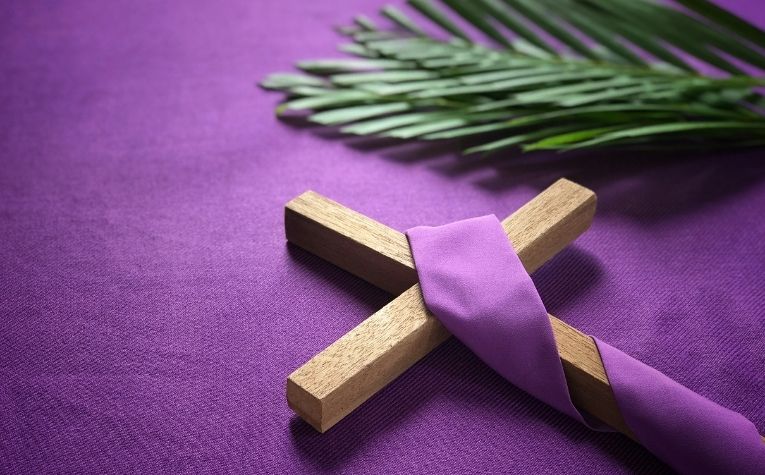Throughout the centuries, Lent has provided opportunities for Christians to slow down and examine themselves to prepare to observe Jesus Christ’s death. This aligns with the emphasis that Methodists have historically placed on intentional, purposeful Christian living. This invites the question: Do Methodists celebrate Lent?
Many Methodists observe Lent, although it is not required that they do. For Methodists, as with other Christians, Lent begins on Ash Wednesday and ends on Holy Saturday. A Methodist may give up eating meat or other pleasurable activities to enhance their focus and express their dependency on God.
Do Methodists give up meat for Lent? Do Methodists celebrate holy days such as Ash Wednesday or Good Friday? Continue reading to learn answers to these questions and others.
Also, see Methodist vs. Foursquare: What’s the Difference? to learn more.

Why Do Some Methodists Give Up Meat For Lent?
Some Methodists choose to give up meat for Lent. However, Methodists observe Lent in a variety of different ways. Fasting is just one of these options.
The primary purpose of Lent is to give up something pleasurable for a time, to focus one’s attention on God. There are different kinds of fasts for Lent.
- First, Lent draws inspiration from Jesus’ 40-day fast in the wilderness. This particular fast is total, during which a person eats no food and drinks only water.
- Second, another kind of fast involves giving up one category of food. One common category is meat, but it could be bread, desserts, or foods with refined sugar.
- Third, another type of fast requires a person only to eat one meal a day and then eat little to nothing for the remainder of the time.
However, some Methodists choose to give up things other than food. This sacrifice can often prove to be just as challenging.
Examples of things people could give up include not watching television, refraining from using social media, or not participating in a sport or other hobby or pastime. (Also see Why Do Methodists Say the Apostles Creed?)
All of these practices are valid expressions of Lent so long as people do them purposefully to self-reflect on the state of their soul or to focus their minds on God.
Because of this, in addition to removing an earthly pleasure during Lent, many people also add a spiritual discipline like prayer or practicing good deeds for others.
Some Christians follow a Lenten calendar, which provides spiritual practices for a person to observe each day of Lent. Many find this helpful because it helps redirect a person’s focus away from missing whatever pleasure they are giving up and towards something positive and life-giving.
For Methodists, Lent lasts 40 days, not counting Sundays. They do not count Sundays because just as Lent looks forward to Holy Week and the resurrection of Jesus, so does each week look forward to the “mini-Easter” of each Sunday. Lent is generally a way for Methodists and Christians of other traditions to prepare themselves for Holy Week. [1] (Also see Do Methodists Pray the Rosary?)

Do Methodists Participate In Ash Wednesday?
Methodists participate in Ash Wednesday and have liturgical church services centered around it. However, this was not the case until the 20th century. In 1992, the United Methodist Church added an Ash Wednesday service to its Book of Worship. (Also see Do Methodists Drink Alcohol?)
Previously, the Methodists provided a liturgy for an “ashless” Ash Wednesday service. The current liturgy does not require ashes but offers them as an option. [2]
Ash Wednesday focuses on two critical themes in the church’s life: individual sinfulness and human mortality. Scripture uses ashes in several places to represent these two themes.
- In Genesis, the Bible says that God made man from dust, and later, when God kicks Adam and Eve from the garden, he tells them, “You are dust, and to dust you shall return.” Translators often render the Hebrew as “dust,” yet it can also mean ashes. Thus, the Bible sometimes uses ashes to convey human mortality.
- In some places in the Bible, people also use ashes during times of repentance. For instance, in Jonah 3:6, the king of Nineveh, when he recognizes the city’s sinfulness, clothes himself in sackcloth and sits in ashes. He hopes that by repenting, God will spare the city of Nineveh from destruction.
Because of this biblical precedent, Christians have put ashes on their heads since at least the 10th century during Lent. In more recent times, some traditions, including Methodists, have started drawing crosses on their foreheads with the ashes. (Also see Do Methodists Believe in the Saints?)
Methodists believe that ashes are an accessory to sincere intention to repent of one’s sins and reflect one’s mortality as a human. They do not offer mystical power; instead, they provide a robust and tangible way for Christians to express and interact with critical spiritual truths.
Often, when Christian ministers draw the cross of ashes on a person’s forehead, they utter, “Remember that you are dust and to dust you shall return.” Alternatively, the minister might say: “Repent, and believe the gospel.”
On the Church Calendar, Ash Wednesday begins the season of Lent. For Methodists, Lent ends on Holy Saturday. (Also see Do Methodists Believe in Predestination?)

Do Methodists Celebrate Good Friday?
Methodists celebrate Good Friday, following the guidelines outlined in their Book of Worship. In addition, there is much symbolism built into the service. Good Friday in Methodist churches often follows this pattern:
- When congregants and church leaders walk into the church building, they remain silent.
- Before the service, Methodists remove everything joyful or pleasant such as decorations, flowers, and other things.
- The church leaders then shroud everything fixed, such as large crosses or pictures.
- When everyone has entered, the service begins with a greeting: “Christ himself bore our sins in his body on the tree that we might die to sin and live to righteousness. Let us pray.”
- One of the service’s main parts is reading the passion narrative. Sometimes, this is done dramatically, with the different parts read by various people. The service ends with people exiting as they entered — in silence. [3]
Whereas Methodist services typically include many redemptive or joyful readings or hymns, ministers attempt to keep the service focused on the nature of Christ’s crucifixion. This practice creates a contrast with the triumph of Easter Sunday. (Also see Can a Methodist Take Communion in a Baptist Church?)
It also serves as one final self-reflective space of time at the end of the observance of Lent. Just as people gave up pleasurable things during Lent, so did Christ give up glory in heaven for life on earth. (Also see Can Divorced People Marry In a Methodist Church?)
References:
[1] Source
[2] Source
[3] Source
Related Questions
Methodism is a prominent branch of Protestant Christianity that dates to the mid-18th century. Pentecostalism is a movement within Protestantism that originated in the early 20th century. What's the...
The Methodist Church and the Roman Catholic Church both value doctrine and practice. Both traditions also believe they faithfully follow the teachings of Jesus of Nazareth, and they agree on...
